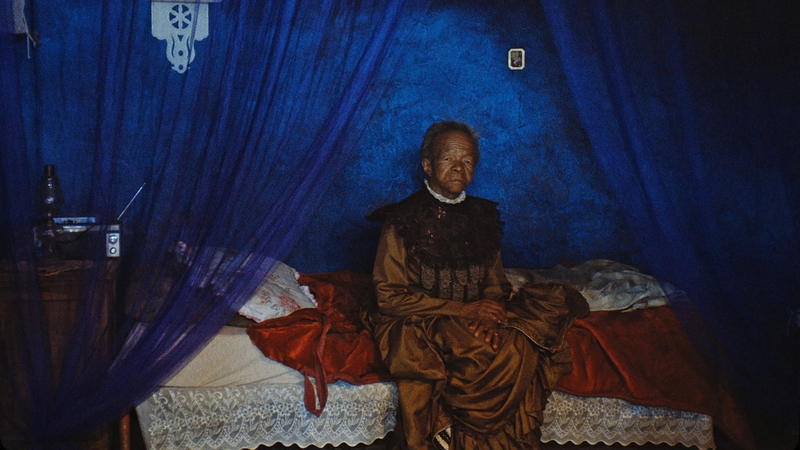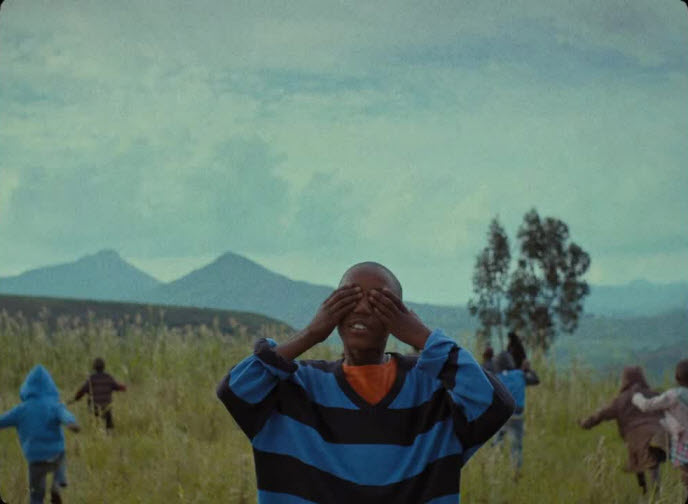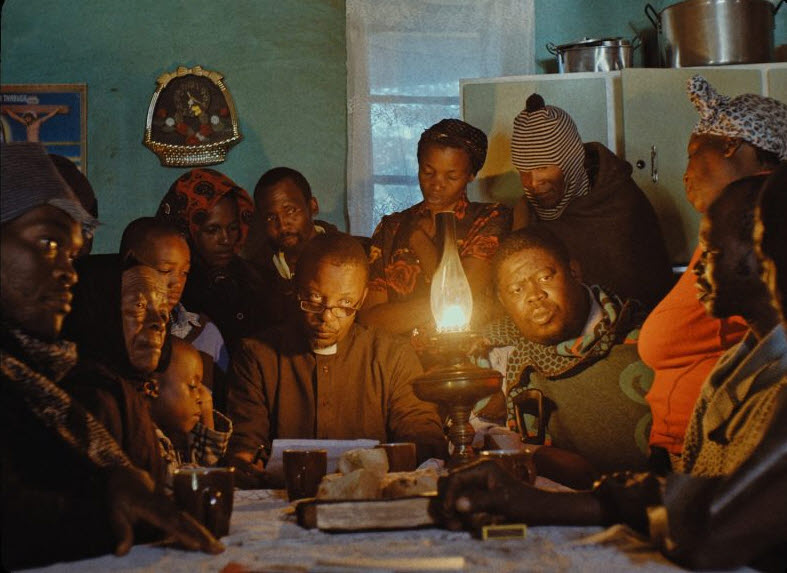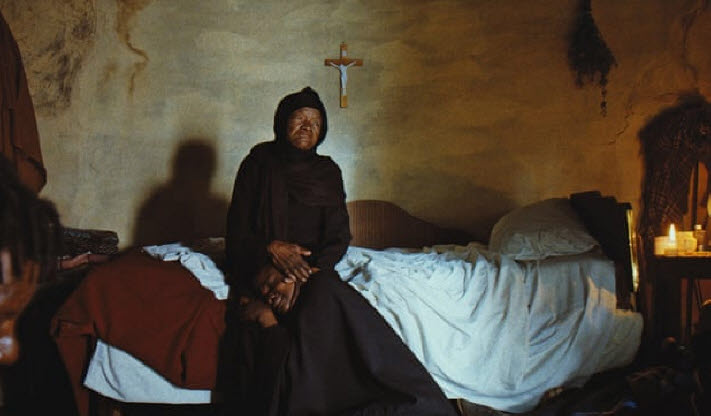“This Is Not a Burial, It’s a Resurrection”, which was the official selection of Lesotho for Best International Film Oscar in last year, is a small but unforgettable film to be admired and appreciated a lot for several good reasons. Leisurely unfolding its unadorned but poignant narrative on the screen, the movie gradually holds our attention via its distinctive local mood and details, and its seemingly plain but undeniably memorable moments will linger on your mind for a long time after you watch it.
After showing a brief blurry visual moment which baffles us a bit, the movie promptly looks into a dark and shabby place where several figures are idly spending some time. After slowly looking and moving around this place for a while, the camera eventually focuses on an old musician figure sitting alone in a corner, and this figure, who is played Jerry Mofokeng Wa Makhetha (You may remember this South African actor for his notable supporting role in Oscar-winning film “Tsotsi” (2005), by the way), comes to function as the narrator of the following story.
The center of the following story is an old woman named Mantoa (Mary Twala Mhlongo). She has lived alone in a small rural village located somewhere in Lesotho for many years, and she is certainly looking forward to seeing again her only son who is also her only surviving family member, but, alas, she is only notified later that her son, who has worked in some big mine far from the village, died for some unknown reason, and she is naturally devastated by her son’s unexpected death.
Calmly observing Mantoa’s subsequent morning period, the movie lets us gather more details about her village life. She has been respected by many others in the village as a witch doctor, and she is even visited by a local priest, who is willing to give her some pep talk as a decent guy who personally understands well how unbearable grief can be. Although he tries his best outside her little house, Mantoa’s grieving mind is already going somewhere as she keeps staying inside her residence, and the colorful interior of her residence makes a quiet but striking contrast to her current state of mind.
Meanwhile, the people of the village come to face a difficult choice to make. Due to a big dam to be built sooner or later at a nearby spot, the village is going to be flooded in water, and the government, which is mainly represented by a local politician, suggests that they all should relocate to some other place with some substantial compensation. Many of villagers are interested in accepting this offer from the government, but most of them are still hesitant about giving up their old hometown, and they are also concerned about how to handle the matters with their little cemetery where their deceased family members were buried.
In case of Mantoa, this situation invigorates her because, as an old lady who has almost nothing but her past which is closely connected with the village, she is determined to stick to her village till the end of her remaining years. When she actively draws the attention from others at one point, many of them are not so pleased at first, but it does not take much time for her to persuade them to be on her side, and the movie gives us a little spine-tingling moment of solidarity among her and others.
Now, the story seems to enter the territories of other similar small-town social drama films such as Robert Redford’s “The Milagro Beanfield War” (1988), but the screenplay by director/writer/editor Lemohang Jeremiah Mosese, who previously made a feature film debut with “For Those Whose God Is Dead” (2013), simply stays focused on Mantoa and her fellow villagers while never overplaying their conflict with the ongoing dam project outside. During one particular scene where they gather around the priest as he writes a letter of petition, the camera merely observes them from its static position, but we slowly come to get the palpable sense of community from them, and their faces bring considerable human quality to this memorable moment.
Shot in 1.33:1 ratio by cinematographer Pierre de Villiers, the movie often shines with precise scene composition and interesting details, and I particularly admire one certain masterful scene among Mantoa and two other characters. While the camera steadily looks at Mantoa and one of these two characters, we also see the other character via a tiny mirror on the wall, and I would love to learn more about how Mosese and de Villiers prepared before shooting this visually impressive moment.
Above all, the movie is quietly held together by the strong lead performance from Mary Twala Mhlongo, which feels all the more poignant considering that the movie is one of her several last films before her death in last year. Although the movie often maintains some distance from her character, her solid performance steadily functions as the beating old heart of the film, and we come to understand her character more before the story eventually reaches to the point where her character comes to commit a bold act of defiance alone by herself.
In conclusion, “This Is Not a Burial, It’s a Resurrection”, which received the World Cinema Dramatic Special Jury Award for Visionary Filmmaking when it was shown at the Sundance Film Festival early in last year, is a fascinating piece of work which deserves more attention in my humble opinion, and I must tell you that it relaxed and tranquilized me a lot after I experienced the fun and excitement of “Spider-Man: No Way Home” (2021) at last night. In short, this is another highlight of 2021, and I sincerely urge you to check out this overlooked masterwork as soon as possible.











Pingback: 10 movies of 2022 – and more: Part 2 | Seongyong's Private Place